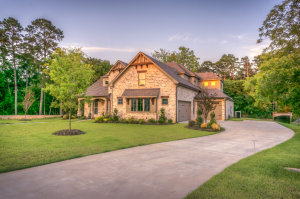
The effects of climate change are becoming more and more real with each passing day. Fortunately, both industries and households are answering the call by seeking out more environmentally sustainable ways to operate.
One example of this is green housing. As previously discussed in ‘Go Green When Designing Your Custom Home’, more and more people are making the shift to eco-friendly homes. But despite many people claiming that they’re for green housing, do they know what it actually entails? Here’s a peek at some of the unique ways countries all over the world are approaching green building concepts.
Conserving Water
One of the four pillars of green housing established by the National Green Building Standard details that green housing must lower the overall utility costs of a home. Considering that water is one of the most substantial costs within households, this makes it a great place to start.
While water recycling is a great way to conserve water, why not look at the root of the problem? Households from all over the world waste millions of liters in water every year via leakages. Decreasing the amount of wasted water via regular maintenance is a great step towards a greener household. In line with this, UK-based provider HomeServe lists the kinds of coverage homeowners need for utilities like plumbing. This includes regular maintenance checks and the option to upgrade. Such measures will ensure that you’re doing everything you can to avoid wasting water unnecessarily due to poorly maintained plumbing. It’s a responsible move for homeowners who wish to build green to target an area that can easily be fixed if prioritized.
Using Sustainable Materials
At its core, building green is all about using materials that won’t put a heavy burden on the environment, as what makes up the house is just as important as the structure itself.
Using low VOC products and materials to limit off-gassing is one important way to ensure you’re living in a healthy and sustainable home. Another great example is using steel roofs over the traditional asphalt shingles. While initially perceived to be less sustainable, steel roofs are made up of recycled materials that can be reused over and over again. A country that has done particularly well in this regard is Sweden. Sweden has completely bought into the idea of sustainable housing, as they’ve even managed to cut construction waste by half through the use of 3D simulation techniques.
Creating Renewable Energy
If you want to build a greener home, start with how you’re powering it. Households throughout the world significantly contribute to greenhouse gas emissions via the slew of electrical appliances within their homes, which just underscores how the things we use daily can significantly impact the Earth. So how do we change this? One way is to make sure your home is outfitted with Energy Star certified appliances. Better yet, choose a home that has been certified to Energy Star Standards or the National Green Building Standard.
Looking to alternative sources of power, such as solar power, can also do a great deal in reducing one’s carbon footprint. Across the world, Sweden has taken a different approach. The New York Times highlights how Sweden uses trash to power and heat their homes. The garbage is incinerated at power plants, which produces heat that is then transformed into steam. The steam powers turbines like a traditional plant that burns coal or gas. And while this isn’t something that can be done overnight, it’s something that should be considered if we’re really serious about building green.
Improving Indoor Air Quality
There are many easy and affordable ways to decrease the level of indoor air pollution in your home. And considering the EPA estimates that indoor air is 2-5x dirtier than outdoor air, these are steps we should all be implementing to keep our respiratory health in check.
There are brilliant innovations that take improving your indoor air to the next level, however. In Finland, Finnish health technology company Naturvention has designed a Naava smart greenwall that purifies the air and increases the overall indoor quality of a space. These built-in fixtures break down the air impurities and convert them to nutrition for the plants. One greenwall is equivalent to having 4,000 houseplants from an air purification perspective.
These are four guidelines that help define what building green really means. While these tips are useful, there are numerous ways to improve the water, air, energy-efficiency and sustainability of your home. Everything can be improved. In fact, the survival of the planet hinges on perpetual improvement especially when it comes to living more sustainably.
———————————–
Guest post by Olive Maxwell